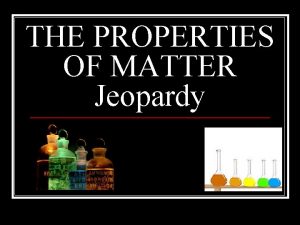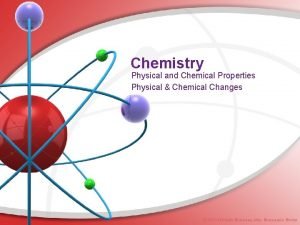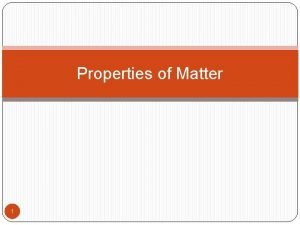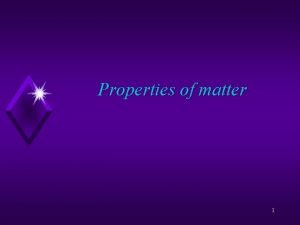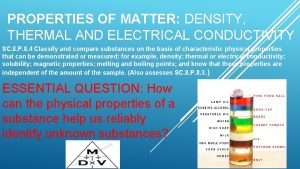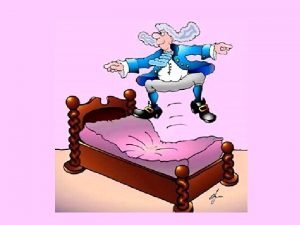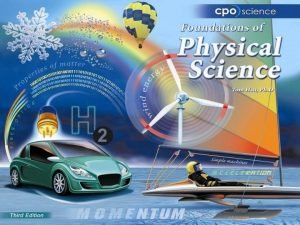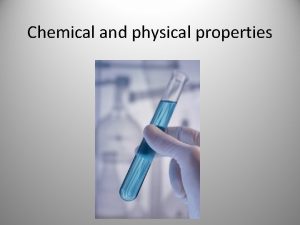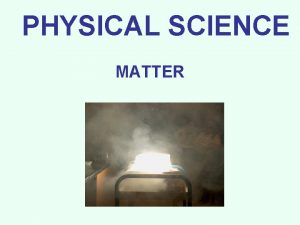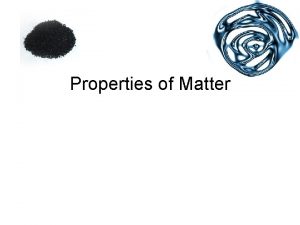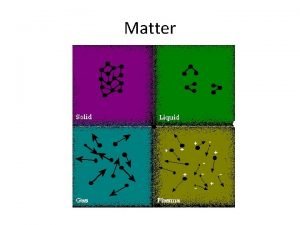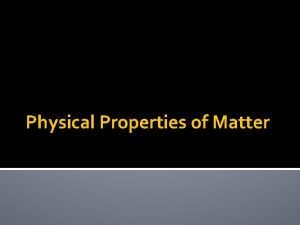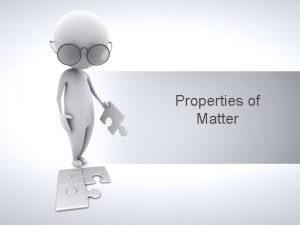Physical Properties of Matter A physical property is













- Slides: 13


Physical Properties of Matter • A physical property is a characteristic of a pure substance that can be observed without changing it into another substance -Physical state -Temperature for freezing, boiling, or vaporizing -Ability to dissolve in water -Hardness, texture, color, and flexibility • Can be used to classify matter (ex. Metals are flexible and can conduct heat and electricity)

Chemical Properties of Matter • Chemical properties are characteristics of a pure substance that describe its ability to change into different substances -Properties can be used to classify substances -Examples: Ability to burn and/or react with other substances §Only observed when the original substance is changed into a different substance -New substances may have different properties then the original substances

Changes in Matter can undergo two basic types of changesphysical changes and chemical changes Physical changes- alters the form or appearance of matter but does not form any new substances Chemical changes- changes in matter that produce one or more new substances

Physical Changes of Matter A substance that undergoes a physical change is still the same substance after the change • A change in state, such as from a solid to a liquid or from a liquid to a gas, is an example of a physical change

Chemical Changes in Matter A substance undergoing a chemical change is transformed into a different substance • In some chemical changes, a single substance changes into one or more other substances (ex. When hydrogen peroxide is poured on a cut it breaks down into water and oxygen gas) • In other chemical changes, two or more substances combine to form different substances (ex. Iron oxide forms when iron combines with oxygen in the air) Unlike a physical change, a chemical change produces new substances with properties different from those of the original substances

Observing Chemical Change Properties of Copper Pennies are coated with copper. Which are physical properties of copper and which are the chemical properties? What are two additional properties?

Describing Chemical Reactions Chemical Formulas The formula of a compound identifies the elements in the compound and the ratio in which their atoms or ions are present. What are the missing chemical formulas in the table?

Describing Chemical Reactions Modeling a Chemical Equation Like a skateboard, a chemical equation has a basic structure. How many complete skateboards can be made from the parts pictured?

Describing Chemical Reactions Molecules of nitrogen (N 2) and hydrogen (H 2) react to form ammonia (NH 3). How many H 2 and N 2 molecules are needed to yield two molecules of NH 3? 1 Nitrogen atom = 3 Hydrogen atom =

Conservation of Mass Law of conservation of mass- The principle that the total amount of matter is neither created nor destroyed during any chemical or physical change • No mass is lost or gained during a chemical or physical change • Since mass measures matter, this law is sometimes called the law of conservation of matter

Describing Chemical Reactions Conservation of Mass In a chemical reaction, matter is not created or destroyed. What is the mass of iron sulfide produced by this reaction?

Controlling Chemical Reactions Activation Energy A chemical reaction needs a push to the “top of the mountain” to get started. Where has enough activation energy been added to start the reaction?
 Physical property and chemical property
Physical property and chemical property Physical properties of matter jeopardy
Physical properties of matter jeopardy Graphic organizer classification of matter
Graphic organizer classification of matter Physical properties of notebook paper
Physical properties of notebook paper Commutative and associative properties
Commutative and associative properties Classification of property law
Classification of property law General property of matter
General property of matter General property of matter
General property of matter Electrical properties of matter
Electrical properties of matter What property of matter that describes a rusty anchor.
What property of matter that describes a rusty anchor. Hooke's law mathematical expression
Hooke's law mathematical expression 12 properties of matter
12 properties of matter Physical properties of helium
Physical properties of helium Section 1 composition of matter
Section 1 composition of matter

